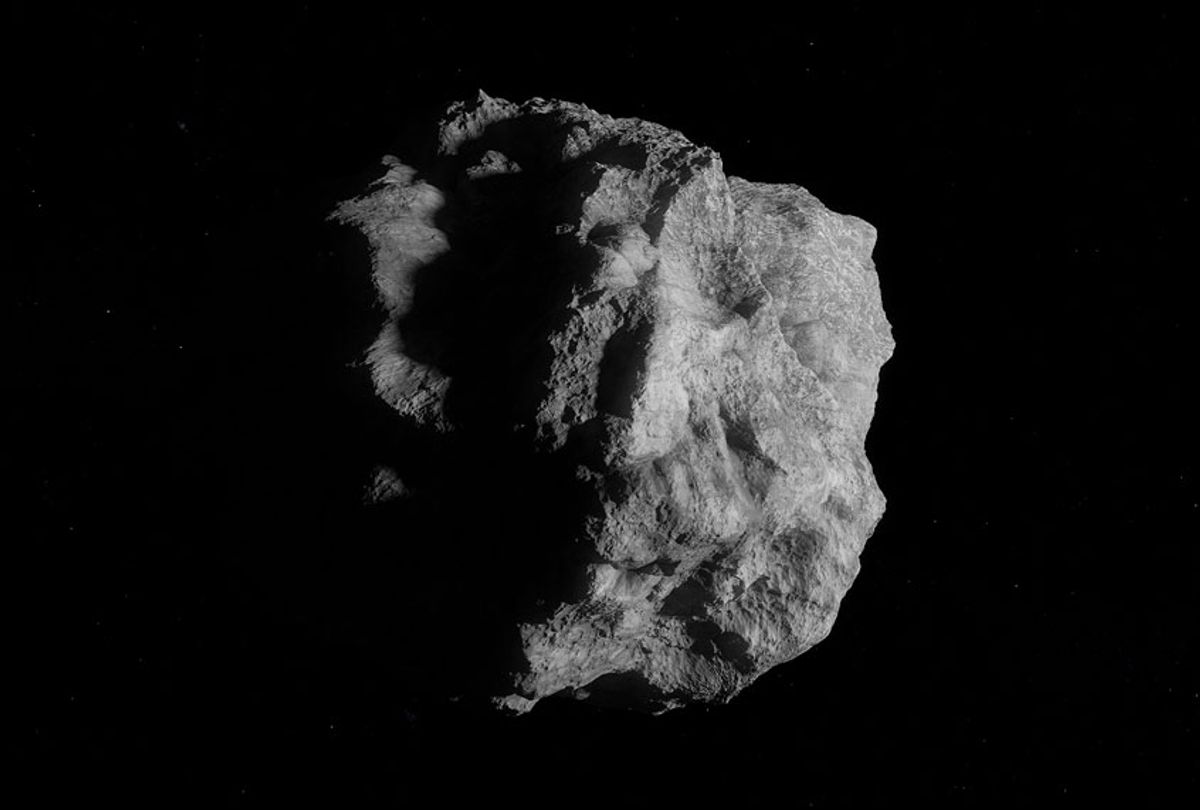As if 2020 needed another bout of apocalyptic news, reports circled this weekend that an asteroid is headed toward Earth right on Election Day. "Just in Time for the Election: An Asteroid?" the New York Times reported. "Asteroid heading our way right before Election Day," the CNN headline blared as the topic trended on social media.
It would certainly be the cherry on top of a not-so-sweet year. But just as headlines about the murder hornets were overhyped, this asteroid is nothing to fret about — this year.
"It currently has a 0.41% chance of entering our planet's atmosphere, but if it did, it would disintegrate due to its extremely small size," NASA's Planetary Defense Coordination Office tweeted on Aug. 23.
2018 VP1, which is the name of the asteroid, is about 6.5 feet in diameter. While November 2, 2020 is the day that it has a 1 in 243 chance of hitting Earth, the asteroid wouldn't cause any damage even if it does strike us. It's far too small. In fact, it's not uncommon for asteroids of this size to burn up in the atmosphere.
For context, the asteroid that researchers believe wiped out the dinosaurs was roughly 6 miles wide. Its impact radically changed the climate and atmosphere, which led to a mass extinction event.
Dr. Ed Lu, executive director of the Asteroid Institute and a three-time NASA astronaut, told Salon it will be like "a shooting star in the sky" if it enters Earth's atmosphere.
"This is ridiculously small, meaning even if it hits the Earth it's a bright show and that's it," Lu said. "It would look like a fireball in the sky. It's the kind of thing that happens every few weeks on Earth."
In 2018, astronomers discovered the asteroid using a robotic telescope called the Zwicky Transient Facility in California. Its trajectory has a high uncertainty, since it hasn't been seen since its discovery, but it has a two-year orbital period which means it is on its way back to us. While it is expected to be near Earth on Nov. 2, 2020, the day before the United States' Election Day, it is more likely to pass a few thousand miles away from our planet.
Lu said it's possible that this Near-Earth Object (NEO) could swing back and make an appearance in Earth's atmosphere at a later date, but emphasized it still wouldn't do any damage on Earth because of its size.
"Asteroids in general that come back to Earth do swing back at later times," Lu said, adding that it could be a "teaching moment" for researchers and the public in part because of how hit or miss asteroid tracking is at the moment.
"You don't have perfect data, because you have a limited number of observations, so therefore you're just sort of a range of possibilities that are all consistent with those few data points that we have," Lu said.
If it isn't a big deal, then why did this story go viral? Nobody knows, but it could be the funny timing — coming right on the same day as a pivotal election.
"This story should have been cut on the newsroom floor before it went viral," Danica Remy, President B612 Foundation, told Salon. "Clearly someone went digging for this non-news story on the JPL Sentry page for sensationalized drama and clicks".
Notably, last week a small asteroid also flew by very close to Earth; an asteroid named 2020 QG. According to NASA's Jet Propulsion Laboratory, it is now the closest known non-impacting asteroid. Like the Election Day asteroid, there was no concern about it impacting Earth because it would have likely have become a fireball as it entered Earth's atmosphere.
"It's really cool to see a small asteroid come by this close, because we can see the Earth's gravity dramatically bend its trajectory," Paul Chodas, director of the Center for Near-Earth Object Studies (CNEOS) at NASA's Jet Propulsion Laboratory in Southern California, said in statement. "Our calculations show that this asteroid got turned by 45 degrees or so as it swung by our planet."



Shares